
Himself
From cinema-verite; pioneers Albert Maysles and Joan Churchill to maverick movie makers like Errol Morris, Werner Herzog and Nick Broomfield, the world's best documentarians reflect upon the unique power of their genre. Capturing Reality explores the complex creative process that goes into making non-fiction films. Deftly charting the documentarian's journey, it poses the question: can film capture reality?

Director
Poetry and cinema merge as 11 filmmakers bring to life 21 poems by Québécois poets.

Self
Thanks to the development of techniques and the adventurous spirit of pioneering filmmakers, among whom Michel Brault occupies a central place, a new way of making cinema was born at the turn of the 1950s and 1960s. This film relevantly retraces the history of a collective movement which revolutionized production and filming methods in Quebec and the world.

Self
A documentary about the act of filmmaking.

Self
A revealing look at the great Quebecois director who gave us such classic films as Mon Oncle Antoine, A toute prendre and Kamouraska: Power of Passion. Amidst the rise of French-Canadian identity and the political struggles of the '60s, Jutra was at the forefront of a group of artists dedicated to social change and attacking taboo.

Director of Photography
Jacques Godbout takes us into the world of Anne Hébert, a woman he considered his spiritual sister and who had only one raison d’être: literature. During the four decades of her creative process, this Quebecois poet and novelist rose to the ranks of the greatest French-language writers, with books such as Kamouraska, Les fous de Bassan and Le tombeau des rois.

Director
In 1838, Francois-Xavier Bouchard (Francis Reddy) fights beside his Quebec countrymen and the English minority.

Writer
In 1838, Francois-Xavier Bouchard (Francis Reddy) fights beside his Quebec countrymen and the English minority.

Director
Catherine, a concert pianist, is surprised one night by the arrival of her best friend from childhood, Marie-Alexandrine (Max), whom she hasn't seen for 25 years. Catherine and Max were Québec's most promising young pianists in the mid-1960's when the adventurous Max gets pregnant. She wants to keep the child, but her mother forces her to give him up for adoption; afterwards, Max leaves Québec and music. Now, years later, she returns, obsessed with finding her son. She locates the adoption records, and social services contacts her son to ask if he wants to see her. He refuses, but she keeps trying. Is a relationship with him possible? And what about her musical talent?

Director of Photography
Les inconnus de la terre starts like a traditional feature film: in the beginning of the film all the leading roles are given a short introduction. This is followed by a number of interviews, in which the makers unashamedly appear themselves. They include an interview with a lonely shepherd and one with three unmarried brothers who try to run the parental farm for better or worse. Notwithstanding the fact that this mode of interviewing has now become classical, les inconnus de la terre works rather refreshingly. The film is more than just an enumeration of problems. In an honest way it shows the ties of those involved to the land and to nature, in addition to being a plea for the modernization of French agriculture.

Writer
Six stories about Montreal. 1: A young housewife from Toronto samples the nightlife using basic French. 2: The tale of a painting of Montreal's first mayor, Jacques Viger. 3: During a hockey game, Madeleine tries to tell Roger she wants a divorce after forty years of marriage. 4: A visitor to a conference on pictographs arrives at the airport, where the female customs officer steals a momento from each person. 5: As she is being driven to the hospital in an ambulance after an auto accident, Sarah recalls her life. 6: At a diplomatic reception, an older woman reminisces about her grand love in Montreal.

Director
Six stories about Montreal. 1: A young housewife from Toronto samples the nightlife using basic French. 2: The tale of a painting of Montreal's first mayor, Jacques Viger. 3: During a hockey game, Madeleine tries to tell Roger she wants a divorce after forty years of marriage. 4: A visitor to a conference on pictographs arrives at the airport, where the female customs officer steals a momento from each person. 5: As she is being driven to the hospital in an ambulance after an auto accident, Sarah recalls her life. 6: At a diplomatic reception, an older woman reminisces about her grand love in Montreal.

Director of Photography
Friendship between two old men becomes love. Slightly-unkempt, tired, and frail, Philippe Lanctot moves into a rest home. The administrator says she wants him to be happy, but that seems far from his mind: he's waiting to die. Then, into his room, unannounced, rolls the voluble Victor Laprade, who draws out Philippe over the next few months. Victor gives Philippe the gift of experiencing the moment. In return, the well-heeled Philippe organises field trips to dinner and to a botanical garden, and, unknown to Victor, becomes the man's benefactor when Victor's children get stingy. The openly-gay Victor also pushes Philippe to acknowledge feelings he's always kept suppressed.

Director of Photography
A psychiatrist is sent to evaluate if a convicted multiple murderer who's awaiting execution on Death Row for eighth year now and whose behavior during that time got more and more erratic is still mentally fit to be executed.

Director
A woman agrees to a marriage of convenience with a refugee.
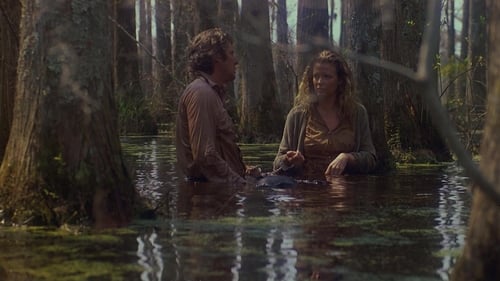
Director of Photography
Un policia suplanta a un pistolero a sueldo contratado para matar a un hombre. Antes de que le desvele la identidad del hombre que le había contratado, el policía es asesinado, y la sexy mujer que le acompaña desaparece.

Director of Photography
Jenny y David van a Canadá con su madre a pasar el fin de semana con sus abuelos. Un cuento lleno de humor, efectos especiales y encuentros mágicos.
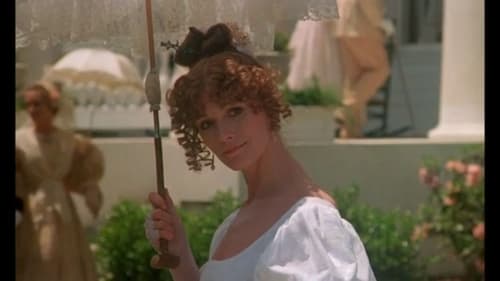
Director of Photography
Virginia Tregan regresa a su hogar en el sur profundo de los EE.UU, de una estancia en París, sólo para descubrir que la plantación de su familia y sus posesiones se han perdido.

Director of Photography
A group of friends reunite after thirty years of separation.

Director of Photography
Celebrated heart surgeon Thomas Vrain supports the research of an offbeat scientist who has invented an artificial heart. Against the advice of the Ethics Committee, Dr. Vrain decides to perform the first artificial heart transplant.
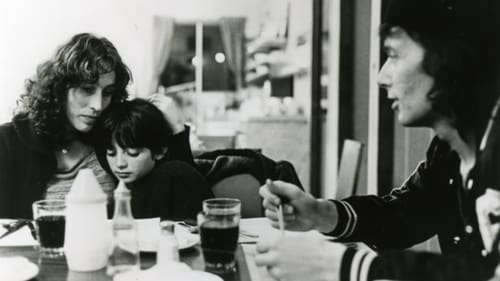
Director of Photography
Set in a small rural town in the Quebec Laurentians, Michelle lives in an isolated house with her mentally-challenged brother Guy and her 13 year old daughter Manon. Together the three of them survive by running a small firewood business and performing other odd jobs. Michelle is frustrated with living in poverty and being the center of several people who demand her affection; her brother is like a second child who lives in his own world, his romantic obsession with their wealthy client Madame Viau-Vachon being an exercise in futility. Maurice, the local police chief, is her lover and Gaetan, a mechanic and family friend, would like to be. Most demanding of all is her daughter, who has an unhealthy emotional dependence on her. Precocious and uninterested in school, Manon is jealous of her Mother's suitors and angry at being left home to do chores and care for Guy. When an event occurs that threatens the emotional dynamic between Manon and her mother...

Executive Producer
Five men work together in a communal effort to build a skiff on Ile-aux-Coudres, an island in the St. Lawrence River. It is built in a traditional fashion, all the more remarkable because no blueprint is used. The film does not merely record a building tradition, it reveals the character of the craftsmen, who are influenced by a pre-industrial way of life underscored by spontaneity and wit.
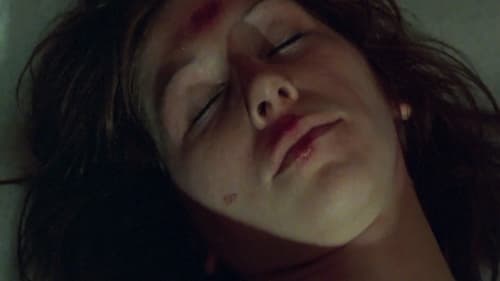
Director of Photography
A director and an editor, both women, cannot work on a movie presenting the rape of a nurse without reacting on the scenes they're working on, the situation of womanhood in general, and the way the 'Justice' handle those cases of rape.

Director of Photography
Hélène is a woman who already has, in her view, quite enough children. For some time she has secretly been taking birth control pills, but now she is too old to use them safely. When her husband Gabriel discovers the pills, he is distressed, since he wants a large family. The two of them discuss their differing attitudes and desires but come to no resolution.

Director of Photography
En octubre de 1970, con el pretexto de combatir a la organización política armada Frente de Liberación de Quebec, el parlamento canadiense votó la War's Measures Act. Policía y ejército fueron legitimados por ella para quebrar a las organizaciones populares de la provincia de Quebec. Más de cuatrocientas personas fueron detenidas por su militancia política o social. Pero nunca fueron acusados de nada. Esta es su historia.

Writer
En octubre de 1970, con el pretexto de combatir a la organización política armada Frente de Liberación de Quebec, el parlamento canadiense votó la War's Measures Act. Policía y ejército fueron legitimados por ella para quebrar a las organizaciones populares de la provincia de Quebec. Más de cuatrocientas personas fueron detenidas por su militancia política o social. Pero nunca fueron acusados de nada. Esta es su historia.

Director
En octubre de 1970, con el pretexto de combatir a la organización política armada Frente de Liberación de Quebec, el parlamento canadiense votó la War's Measures Act. Policía y ejército fueron legitimados por ella para quebrar a las organizaciones populares de la provincia de Quebec. Más de cuatrocientas personas fueron detenidas por su militancia política o social. Pero nunca fueron acusados de nada. Esta es su historia.
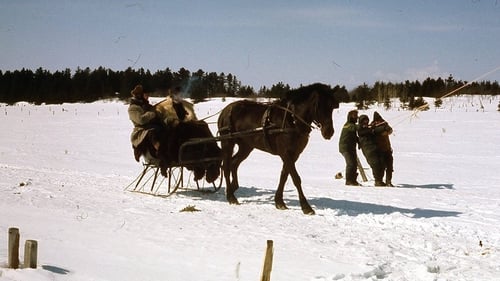
Director of Photography
A writer, Kamouraska is based on a real nineteenth-century love-triangle in rural Québec. It paints a poetic and terrifying tableau of the life of Elisabeth d'Aulnières: her marriage to Antoine Tassy, squire of Kamouraska; his violent murder; and her passion for George Nelson, an American doctor. Passionate and evocative, Kamouraska is the timeless story of one woman's destructive commitment to an ideal love.

Director of Photography
In the film, produced for the series "Young Scientists", for the CBC, a group of young people on vacation share the discovery of the application of the lever in some applications of everyday life.

Director
In the film, produced for the series "Young Scientists", for the CBC, a group of young people on vacation share the discovery of the application of the lever in some applications of everyday life.

Director of Photography
An incident from the early days of Québec's quiet revolution, tailor-made for the cartoonist. It is the story of a Montréal commuter train, a unilingual ticket collector and a bilingual passenger. The passenger appears on screen himself to describe his bid to have tickets requested in French as well as in English. What ensued, and how even the railway president became involved, is illustrated with wit and humor.

Director of Photography
A young boy learns the rituals of what his father and his friends perceive as manhood on a weekend hunting trip.

Director of Photography
La fría zona rural de Quebec de la década de 1940 es el escenario de esta historia sobre un joven y su familia, que maneja el principal negocio del pueblo y además la funeraria, enfocándose en las nuevas experiencias y el proceso de maduración que encara el muchacho. (FILMAFFINITY)

Camera Operator
In the late 1960s, with the triumph of bilingualism and biculturalism, New Brunswick's Université de Moncton became the setting for the awakening of Acadian nationalism after centuries of defeatism and resignation. Although 40% of the province's population spoke French, they had been unable to make their voices heard. The movement started with students-sit-ins, demonstrations against Parliament, run-ins with the police - and soon spread to a majority of Acadians. The film captures the behind-the-scenes action and the students' determination to bring about change. An invaluable document of the rebirth of a people.

Director
In the late 1960s, with the triumph of bilingualism and biculturalism, New Brunswick's Université de Moncton became the setting for the awakening of Acadian nationalism after centuries of defeatism and resignation. Although 40% of the province's population spoke French, they had been unable to make their voices heard. The movement started with students-sit-ins, demonstrations against Parliament, run-ins with the police - and soon spread to a majority of Acadians. The film captures the behind-the-scenes action and the students' determination to bring about change. An invaluable document of the rebirth of a people.

Director of Photography
Essay-film on a crucial issue: the notion of belonging to a country. Lingered sentimentalism or deep psychological reality if one believes it is rooted in the heart of man? The action here takes place in the context of a nation that seeks: the French Canadians, and other people without a country: the Indians of Quebec, the Bretons of France. And here is the fundamental question posed: what are the "viable" peoples whose "maturity" allows them to "give" the autonomy and territory? And what is the environment that people can call "their country"?

Director of Photography
Cortometraje sobre la parte subterránea, tanto geográfica como social, de la ciudad de Montreal, a través de la obsesión de un magnate de los negocios por una joven.

Director of Photography
A chronicle of the lives of a couple and the gradual dissolution of their relationship.
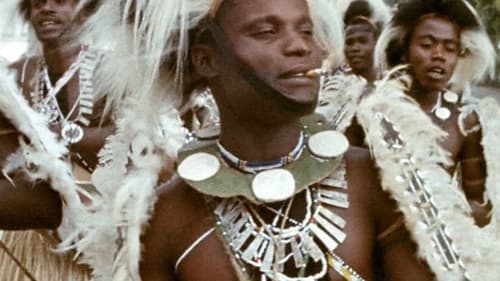
Cinematography
Festival panafricain d'Alger is a documentary by William Klein of the music and dance festival held 40 years ago in the streets and in venues all across Algiers. Klein follows the preparations, the rehearsals, the concerts… He blends images of interviews made to writers and advocates of the freedom movements with stock images, thus allowing him to touch on such matters as colonialism, neocolonialism, colonial exploitation, the struggles and battles of the revolutionary movements for Independence.

Director of Photography
Taking the form of a conversation between a young teacher at a French school in Moncton and her students, the film shows how hard it is for francophones to preserve their language in a society where English is everywhere and has been for centuries.

Director of Photography

Editor
Taking the form of a conversation between a young teacher at a French school in Moncton and her students, the film shows how hard it is for francophones to preserve their language in a society where English is everywhere and has been for centuries.

Director
Taking the form of a conversation between a young teacher at a French school in Moncton and her students, the film shows how hard it is for francophones to preserve their language in a society where English is everywhere and has been for centuries.

Director of Photography
Morbihan is one of the poorest regions in Brittany. Joseph, a 33-year-old farmer, can no longer live off the land. He is hired at the fancy new plant that has just opened where he enters a world of rote work. Fortunately he can go home to his farm every evening, far from the large urban centers where workers must usually live.

Director
Morbihan is one of the poorest regions in Brittany. Joseph, a 33-year-old farmer, can no longer live off the land. He is hired at the fancy new plant that has just opened where he enters a world of rote work. Fortunately he can go home to his farm every evening, far from the large urban centers where workers must usually live.

Director
From the lower St. Lawrence, a picture of whale hunting that looks more like a round-up, with a corral, whale-boys and all. In 1534, when he stopped at the island he named l'Île-aux-Coudres, Jacques Cartier saw how the Indians captured the little white beluga whales by setting a fence of saplings into off-shore mud. In the film, the islanders show that the old method still works, thanks to the trusting 'sea-pigs,' the same old tide, and a little magic.

Director of Photography
A young singer-songwriter abandons his life in his hometown and moves to the city to make it big. He achieves fame, but it comes at a price.

Editor
A young singer-songwriter abandons his life in his hometown and moves to the city to make it big. He achieves fame, but it comes at a price.

Writer
A young singer-songwriter abandons his life in his hometown and moves to the city to make it big. He achieves fame, but it comes at a price.

Director
A young singer-songwriter abandons his life in his hometown and moves to the city to make it big. He achieves fame, but it comes at a price.

Camera Operator
This short 1966 documentary dedicated "to all victims of intolerance” depicts the dawn of skateboarding in Montreal. A new activity frowned upon by police and adults, skateboarding gave youngsters a thrilling sensation of speed and freedom. This film - the first Canadian documentary ever made about the sport - captures the exuberance of boys and girls having the time of their lives in free-wheeling downhill locomotion.

Director
Two teenage girls go to winter carnival in Quebec City for the first time. Their ambiguous, tentative relation with a young boy brings both of them the sweet intensity and disillusionment of first love.

Director
A film in four episodes presenting teenage girls chosen as representative of their country and our time, in Italy, France, Japan and Canada. In spite of the stylistic peculiarities of the filmmakers, we find in each of them the same desire not to affirm anything, not to judge, but to quite simply show.

Director of Photography
A 16 year old girl recalls the last moments of her summer vacation, spent with friends in the Laurentians north of Montreal. She reminisces about their talks on life, death, love, and God. Shot in direct cinema style, working from a script that left room for the teenagers to improvise and express their own thoughts, the film sought to capture the immediacy of the youths presence their bodies, their language, their environment.

Director
A 16 year old girl recalls the last moments of her summer vacation, spent with friends in the Laurentians north of Montreal. She reminisces about their talks on life, death, love, and God. Shot in direct cinema style, working from a script that left room for the teenagers to improvise and express their own thoughts, the film sought to capture the immediacy of the youths presence their bodies, their language, their environment.

Director of Photography
Un hombre lucha con su identidad, sus opciones de vida, su relación interracial y su homosexualidad latente. Un retrato de los jóvenes intelectuales al principio de los años sesenta en Montreal.

Director of Photography
At the instigation of the filmmakers, the young men of the Ile-aux-Coudres in the middle of the St-Lawrence River try as a memorial to their ancestors to revive the fishing of the belugas interrupted in 1924.

Writer
At the instigation of the filmmakers, the young men of the Ile-aux-Coudres in the middle of the St-Lawrence River try as a memorial to their ancestors to revive the fishing of the belugas interrupted in 1924.

Director
At the instigation of the filmmakers, the young men of the Ile-aux-Coudres in the middle of the St-Lawrence River try as a memorial to their ancestors to revive the fishing of the belugas interrupted in 1924.

Director of Photography
At the end of the year 1961, three young students, Denys Arcand, Denis Héroux and Stéphane Venne, decide to direct a feature-length film centered on the perks of student life. The film mixes fiction and reality in the style of cinéma vérité. "Alone or with others" is often considered the first indepent film of Québec.

Director of Photography
They come in high-powered convertibles, with cameras and curiosity, to look at French Canada and French-Canadians. Their usual objective is Québec City, where they can soak up a bit of French culture without a trip to France. With an eye for humour, VISIT TO A FOREIGN COUNTRY shows the people of Québec taking a look at American tourists who have come to Québec to take a look at them.

Director
They come in high-powered convertibles, with cameras and curiosity, to look at French Canada and French-Canadians. Their usual objective is Québec City, where they can soak up a bit of French culture without a trip to France. With an eye for humour, VISIT TO A FOREIGN COUNTRY shows the people of Québec taking a look at American tourists who have come to Québec to take a look at them.

Director of Photography
An aimless young woman is sent home from school with nothing to do. Drifting through the streets of Paris, she comes across a variety of people.

Cinematography
This short film is a series of vignettes of life in Saint-Henri, a Montreal working-class district, on the first day of school. From dawn to midnight, we take in the neighbourhood’s pulse: a mother fussing over children, a father's enforced idleness, teenage boys clowning, young lovers dallying - the unposed quality of daily life.

Cinematography
This film looks at the world of children with hearing loss and the importance of early diagnosis. With its straightforward, rigorous cinematic style and intimate approach to the subject, the film focuses on the human rather than the technical side of the problem of hearing impairment.

Director
This film looks at the world of children with hearing loss and the importance of early diagnosis. With its straightforward, rigorous cinematic style and intimate approach to the subject, the film focuses on the human rather than the technical side of the problem of hearing impairment.
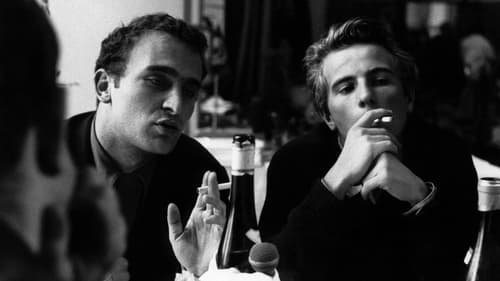
Director of Photography
París, verano de 1960. El antropólogo y cineasta Jean Rouch, acompañado por el sociólogo y crítico de cine Edgar Morin, y asistidos por Marceline y Nadine, deambulan por las calles abarrotadas preguntando a la gente común y corriente cómo afrontan las desgracias de la vida. ¿Eres feliz? Pero su verdadero propósito es averiguar si las personas normales pueden hablar sinceramente frente a una cámara y cómo reaccionan cuando se les invita a analizar el significado de sus respuestas.

Editor
A candid-camera view of professional wrestling as seen in the Montréal Forum, where some of the biggest bouts are staged, and in back-street wrestling parlours where the warriors practice their art.

Director of Photography
A candid-camera view of professional wrestling as seen in the Montréal Forum, where some of the biggest bouts are staged, and in back-street wrestling parlours where the warriors practice their art.

Director of Photography
A classic NFB documentary about the Golden Gloves boxing tournament, the Canadian amateur's hope for success in the boxing world. This Gilles Groulx film shows three Montreal boxers in training. In behind-the-scenes interviews they talk about their ambitions and what prompted them to take up the sport. - NFB

Director of Photography
This short documentary features Canadian contralto Maureen Forrester as she sings at the Festival Casals, a musical event founded by the great Spanish cellist and conductor Pablo Casals and sponsored annually by the Puerto Rican government. Part concert film, part tourism film, Festival in Puerto Rico offers viewers candid glimpses of mid-20th century Puerto Rico intercut with performance footage of Forrester and her husband, violinist-conductor Eugene Kash.

Director
A candid-camera view of professional wrestling as seen in the Montréal Forum, where some of the biggest bouts are staged, and in back-street wrestling parlours where the warriors practice their art.

Director of Photography

Director of Photography
Filmed in the town of Normétal in northern Québec, this short documentary provides a first-hand introduction to life in a frontier mining community where all roads lead to the pithead. Dweller of two worlds, the copper miner's life is one of contrasts. A mile underground are the rock face, the clattering drills, the dust of explosions; above ground, all the familiar activities of a small town. - NFB

Director of Photography

Director of Photography

Director of Photography

Director of Photography
This short documentary depicts Christmastime in Montreal. The milling crowds, department store Santas, Brink's messengers, kindergarten angels and boisterous nightclubs all combine to make a vivid portrait of the holidays.

Director of Photography
An efficiency expert is called in to downsize a trucking company and the employees fight to establish a union to save their jobs.

Director of Photography
This short documentary records the celebration and ritual surrounding a snowshoe competition in Sherbrooke in the late 1950s. The film marked the beginning of a new approach to reality in documentary and prefigures the trademark style of the NFB's newly formed French Unit. Today, Les raquetteurs is considered a precursor to the birth of direct cinema.

Director of Photography
The misbehaving public performs for the camera in a half-hour miscellany of misdeeds. In a behind-the-scenes look at the hour-by-hour operation of a large metropolitan police force, this film presents a fair sampling of what keeps Toronto's police officers busy twenty-four hours a day.

Camera Operator
This short documentary profiles Saint-Jean-Baptiste Day parade in Montreal in 1959. The annual parade takes place every June 24th in memory of Saint-Jean-Baptiste, the patron saint of Québec. Candid shots of youngsters preparing their costumes for the festivities are partnered with a lively jazz soundtrack. All the Montrealers and out-of-town tourists featured in this film avidly participate in a public festivity that is dear to their hearts.

Editor
This short documentary records the celebration and ritual surrounding a snowshoe competition in Sherbrooke in the late 1950s. The film marked the beginning of a new approach to reality in documentary and prefigures the trademark style of the NFB's newly formed French Unit. Today, Les raquetteurs is considered a precursor to the birth of direct cinema.

Director
This short documentary records the celebration and ritual surrounding a snowshoe competition in Sherbrooke in the late 1950s. The film marked the beginning of a new approach to reality in documentary and prefigures the trademark style of the NFB's newly formed French Unit. Today, Les raquetteurs is considered a precursor to the birth of direct cinema.

Director
An experimental short film shot in slow motion and set to Ottokar Nováček's violin composition Perpetuum mobile, the film depicts a love triangle between two men and a woman.

Editor
An experimental short film shot in slow motion and set to Ottokar Nováček's violin composition Perpetuum mobile, the film depicts a love triangle between two men and a woman.

Art Direction
An experimental short film shot in slow motion and set to Ottokar Nováček's violin composition Perpetuum mobile, the film depicts a love triangle between two men and a woman.





















